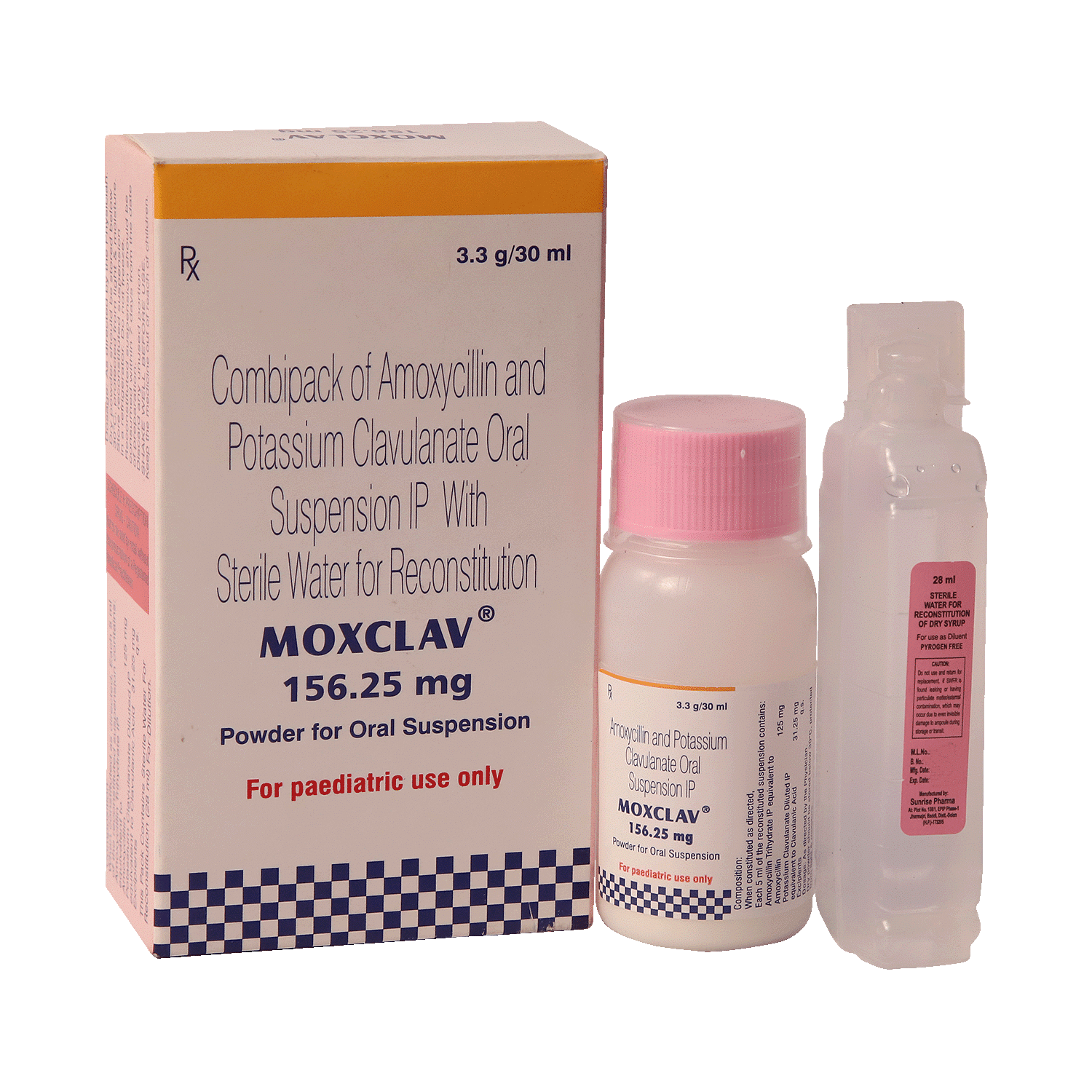
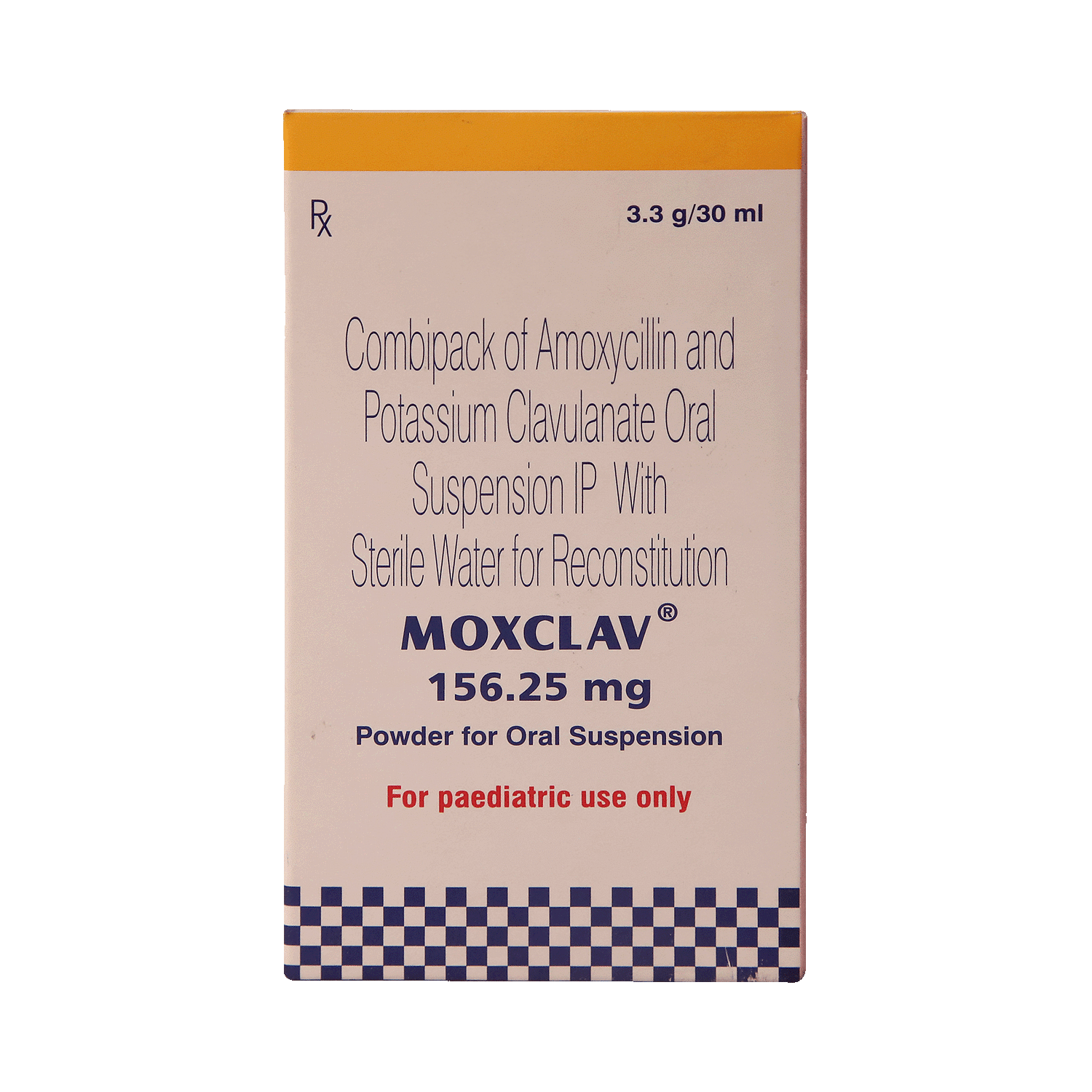
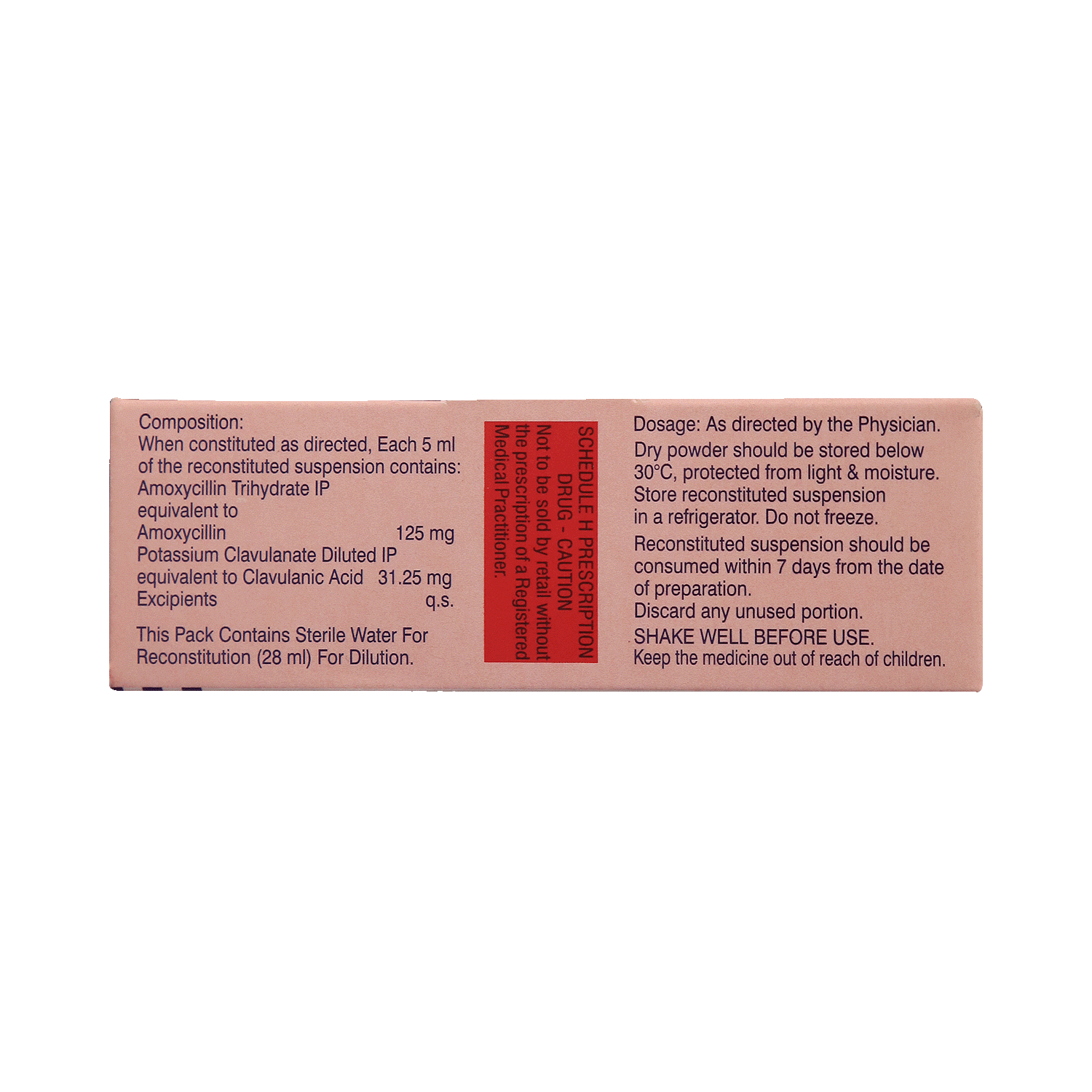
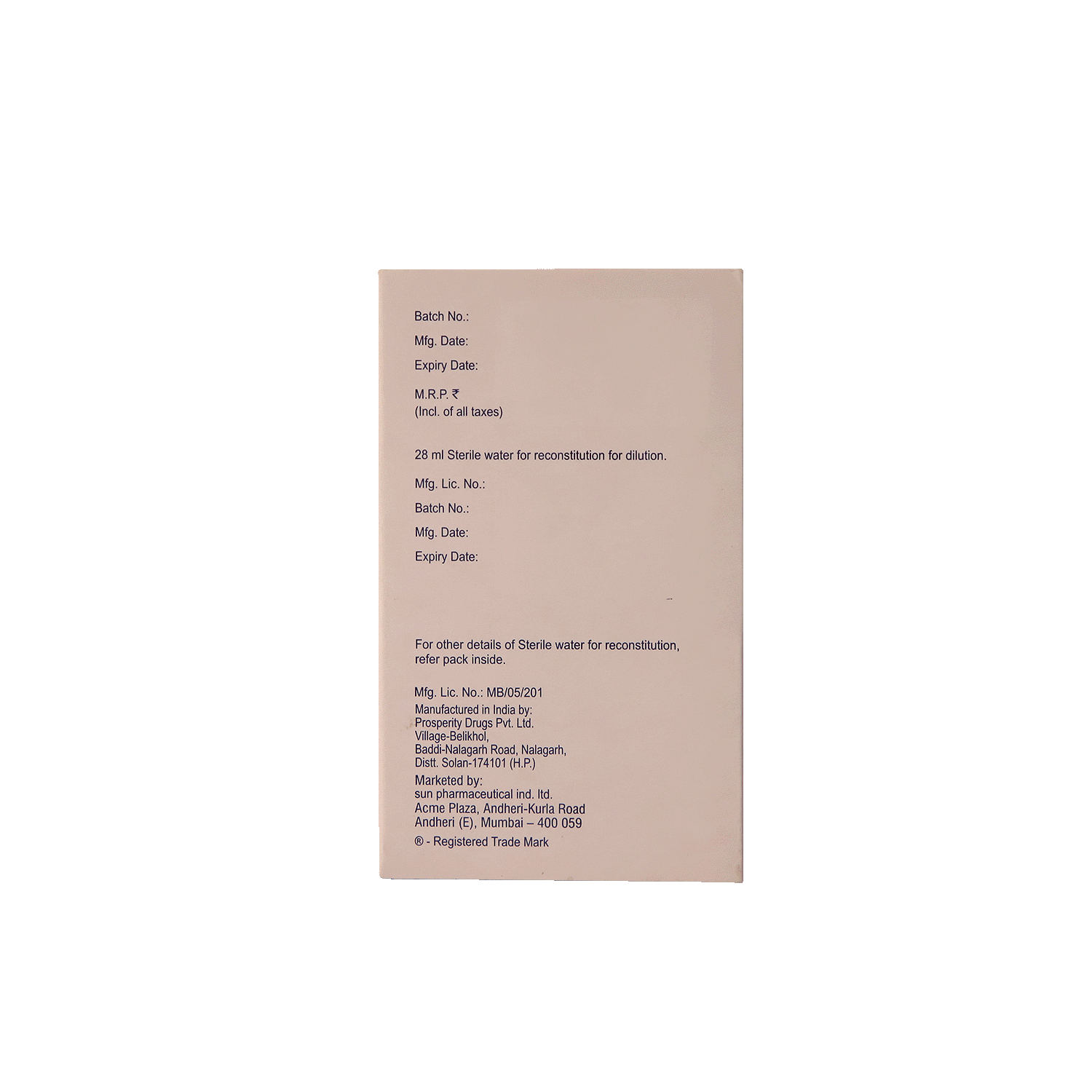
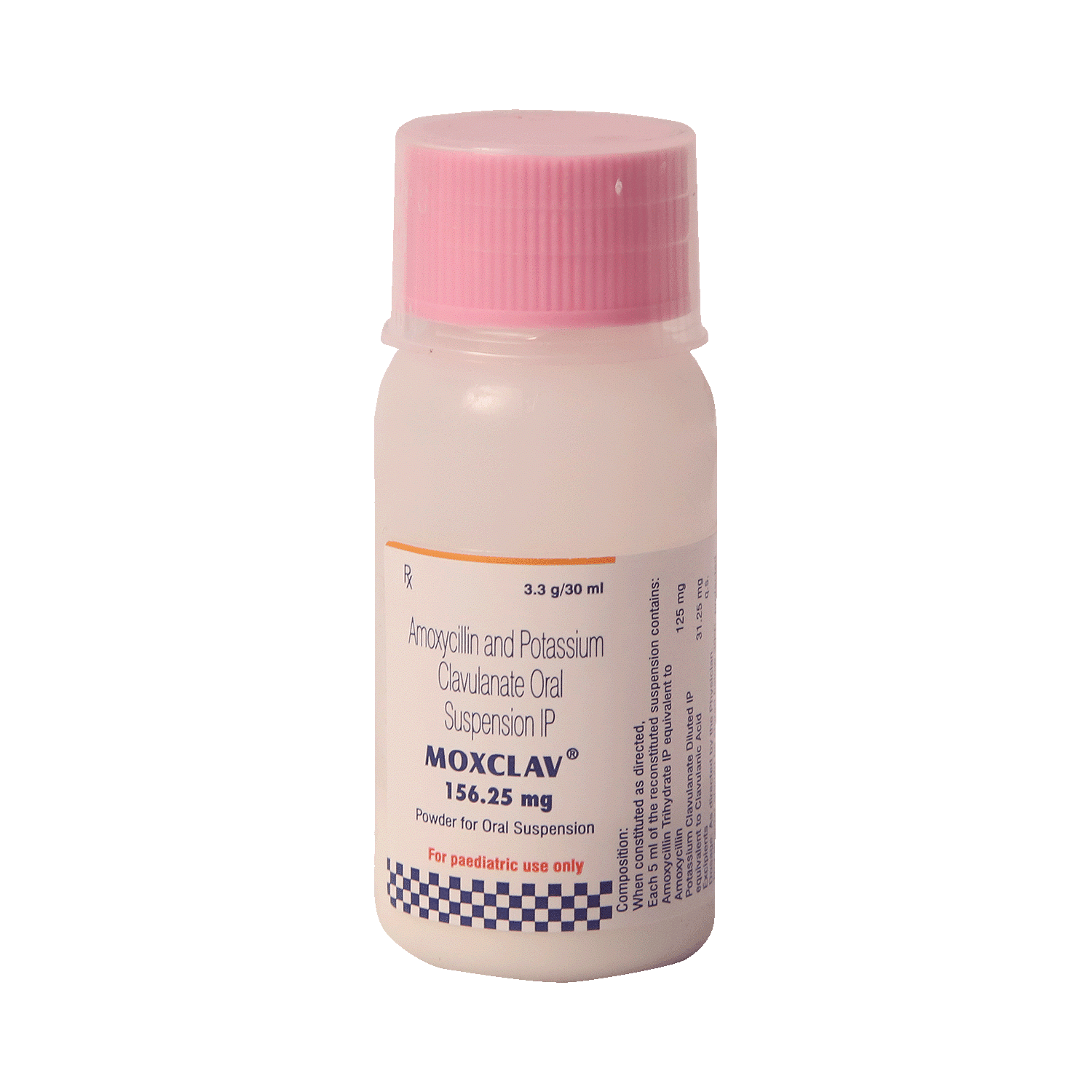
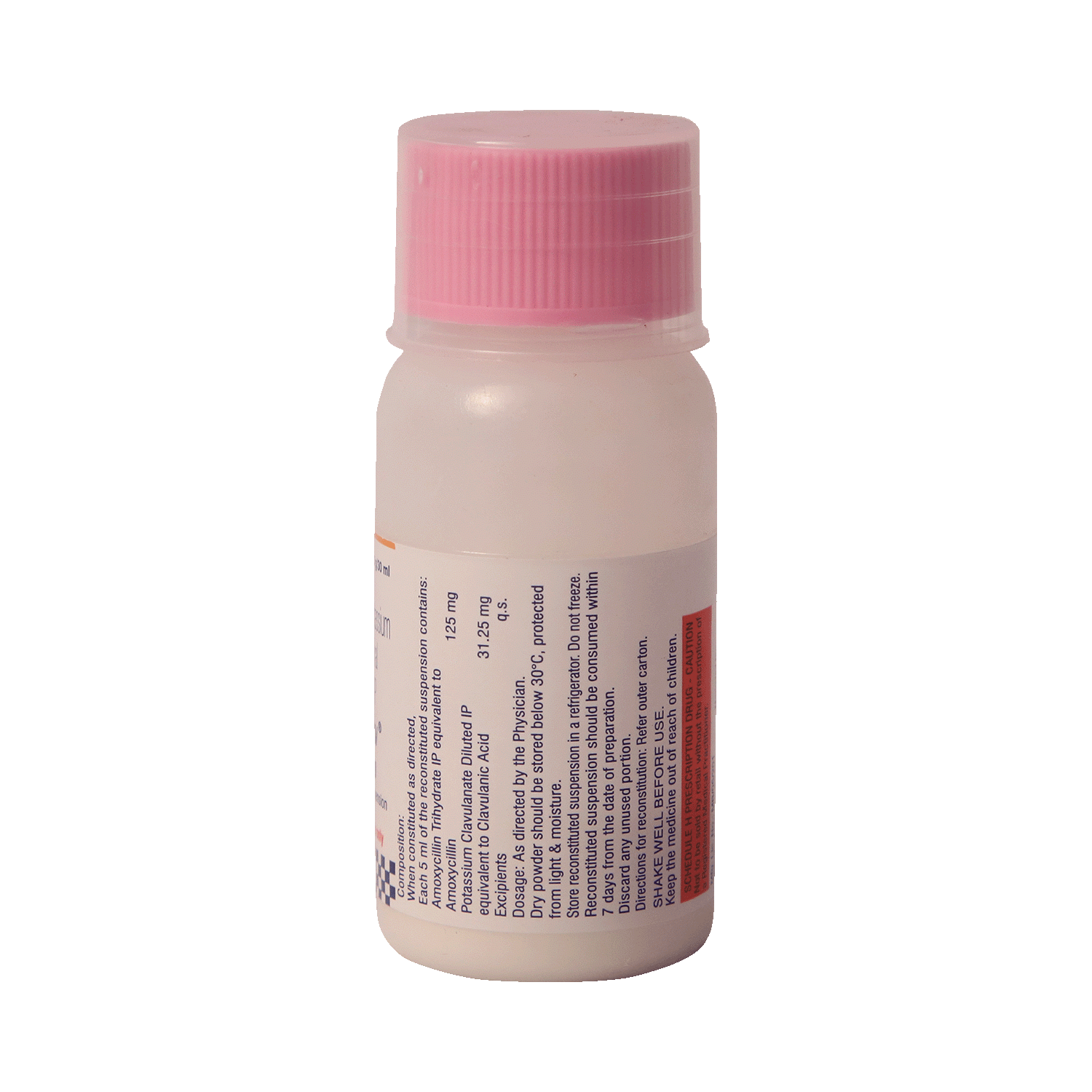


Moxclav 156.25mg Syrup
Manufacturer
Sun Pharmaceutical Industries Ltd
Salt Composition
Amoxycillin (125mg) + Clavulanic Acid (31.25mg)
Key Information
Short Description
Moxclav 156.25mg Syrup is an antibiotic used to treat various bacterial infections including those of the ear, nose, throat, chest, lungs, teeth, skin, and urinary tract.
Dosage Form
Syrup
Introduction
Moxclav 156.25mg Syrup is an antibiotic medicine designed to combat bacterial infections in various parts of the body such as the ear, nose, throat, chest, lungs, teeth, skin, and urinary tract. It is particularly effective against bacteria that have developed resistance to other treatments, making it a valuable option for treating resistant tuberculosis. The medication contains two active ingredients, amoxycillin and clavulanic acid, which work together to inhibit bacterial growth and survival. While generally safe, it is important to complete the full course of treatment to prevent the bacteria from multiplying again or becoming resistant. Side effects may include a bitter taste in the mouth and diarrhea, and it is crucial to consult a doctor if severe reactions like an itchy rash, facial swelling, or breathing difficulties occur.
Directions for Use
Administer the syrup as prescribed by the doctor. Ensure the child completes the entire course of antibiotics. Do not use the medicine to treat viral infections like the common cold or flu.
How it works
Moxclav 156.25mg Syrup contains amoxycillin and clavulanic acid. Amoxycillin prevents the formation of the bacterial cell wall, essential for bacterial survival, while clavulanic acid inhibits beta-lactamase, an enzyme produced by resistant bacteria, making the combination effective against various infections.
Quick Tips
Your child must complete the entire course of antibiotics. Stopping too soon may cause the bacteria to multiply again, become resistant, or cause another infection. Your child may have a bitter taste in the mouth after the intake of Moxclav 156.25mg Syrup. Eating citrus fruit or sipping plenty of water or fruit juice may help. Encourage your child to drink plenty of water in case diarrhea develops as a side effect. Never give Moxclav 156.25mg Syrup until and unless prescribed by the doctor. You must also never share your child’s medicine with anyone else even if they show similar symptoms. Do not give Moxclav 156.25mg Syrup to treat common cold and flu-like symptoms caused by viruses. Never save medicine for future illnesses. It cannot be said whether the same medicine will work on future infections. Check ‘expiry’ before giving Moxclav 156.25mg Syrup to your child. Immediately discard all the expired medicines. Stop Moxclav 156.25mg Syrup immediately if your child develops an itchy rash, facial swelling, or breathing difficulty. Report to the doctor without any delay.
Related Medicines

Novaclav 125 mg/31.25 mg Syrup

Moxday CV Syrup

Sensiclav 125 mg/31.25 mg Syrup

Moxy Plus Syrup

Multiclav 125mg/31.25mg Syrup

Augpen CV Syrup

Ample Syrup
Frequently asked questions
Can other medicines be taken at the same time as Moxclav 156.25mg Syrup?
Moxclav 156.25mg Syrup can sometimes interact with other medicines or substances. Before starting Moxclav 156.25mg Syrup, please inform your child's doctor about all other medications your child is taking. Also, consult your child’s doctor before administering any medicine to your child.
Can I get my child vaccinated while on treatment with Moxclav 156.25mg Syrup?
Antibiotics do not generally interfere with the ingredients in vaccines or cause adverse reactions in children recently vaccinated. However, vaccination should be delayed until your child has fully recovered from illness. Once your child feels better, they can receive a vaccine after consulting their doctor.
Which lab tests may my child undergo while taking Moxclav 156.25mg Syrup on a long-term basis?
During prolonged therapy, the doctor may routinely monitor kidney and liver function tests periodically to ensure your child's well-being.
Can I give a higher than the recommended dose of Moxclav 156.25mg Syrup to my child?
Giving a higher dose of this medicine can increase the risk of side effects. If your child experiences worsening symptoms, consult your doctor for re-evaluation.
Can I stop giving Moxclav 156.25mg Syrup to my child when the symptoms are relieved?
No, do not stop giving this medicine without a complete course even if you feel better. Symptoms may improve before the infection is completely cured, so continue medication for the entire prescribed duration. Consult your doctor for further advice.
Can the use of Moxclav 156.25mg Syrup cause diarrhea?
Yes, Moxclav 156.25mg Syrup may cause diarrhea. This is a common side effect as antibiotics can kill both harmful and helpful bacteria in your child's gut.
Do all viral common colds result in secondary bacterial infection?
Most of the time, bacterial infections do not follow viral infections. In fact, giving antibiotics to a viral infection can increase your child's risk of developing side effects. Seek your doctor’s advice before administering antibiotics.
The mucus coming out of my child’s nose is yellow-green. Is it a sign of a bacterial infection?
Yellow or green mucus in the nose does not always indicate a bacterial infection. During common colds, mucus often thickens and changes color from clear to yellow or green. Symptoms generally last 7-10 days. If symptoms are persistent or there's signs of a more serious complication like severe breathing difficulties or skin rashes, seek immediate medical attention.
Is there any sign which shows that my child needs immediate medical attention?
Call your child’s doctor immediately if they experience serious allergic reactions (difficulty breathing, rashes), gastrointestinal infections (diarrhea), or liver damage (weakness, pallor, vomiting). These side effects are uncommon but can be life-threatening. Seek expert advice as soon as possible.


